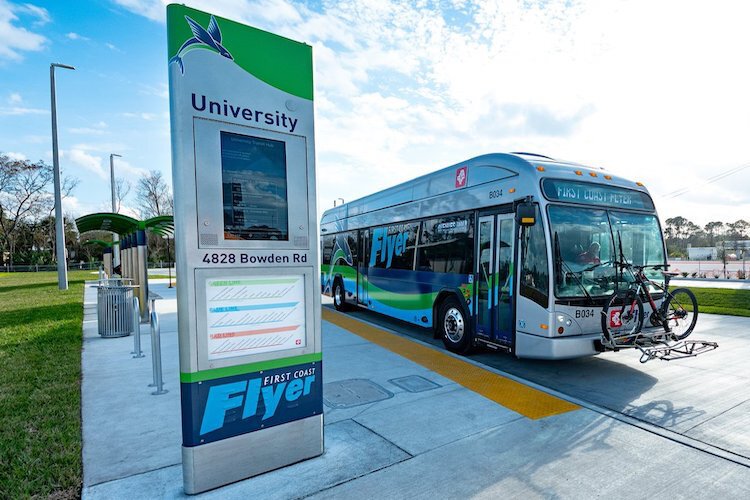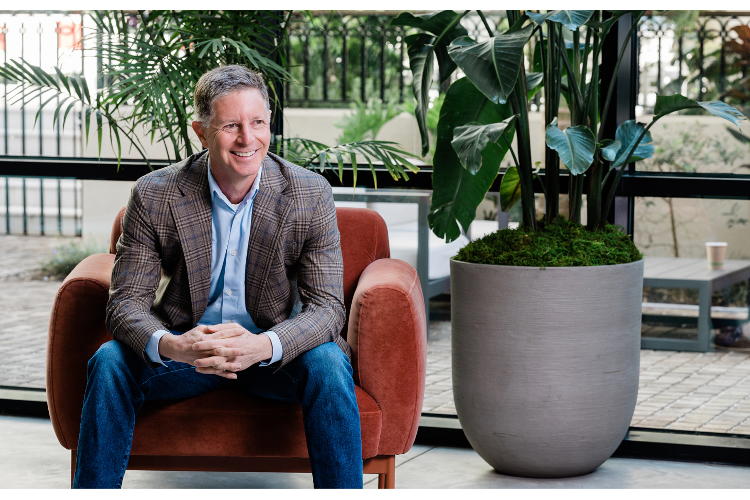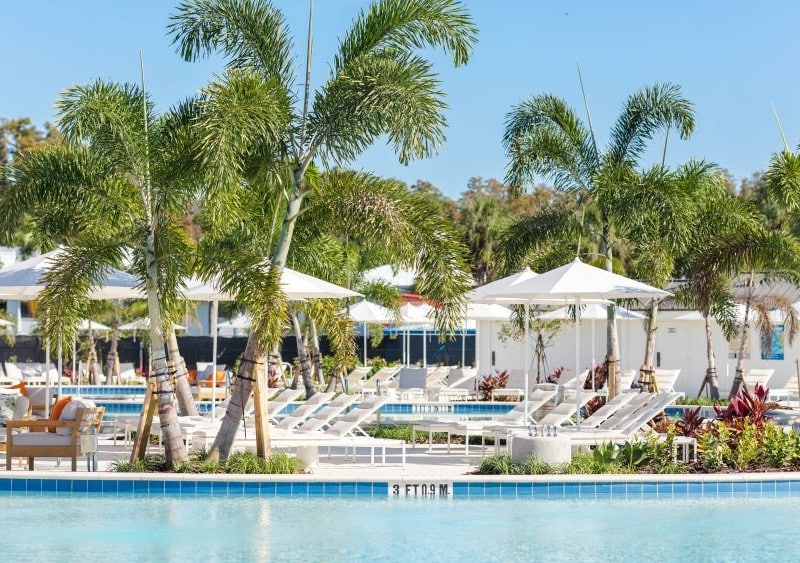Polk County considers adding Bus Rapid Transit service
A proposed BRT (bus rapid transit) route in Polk County would connect to Lakeland’s medical district and Lakeland Square Mall, which may eventually spur transit-oriented development along U.S. 98 in central Florida.
The first comprehensive Bus Rapid Transit system in the world was the Busway which began in Runcorn New Town, England, in 1971.
Since then, 175 cities on six continents have begun Bus Rapid Transit (BRT) as a way to improve reliability and passenger capacity on conventional city bus systems – and Lakeland may be the next stop.
In March, The Florida Department of Transportation (FDOT), District One, held a virtual public meeting to provide input on a U.S. 98 Bus Rapid Transit (BRT) Feasibility Study in Polk County. According to the FDOT, the goal is looking into the possibility of implementing BRT and accompanying transit-oriented development in the U.S. 98 corridor.
Brian Rick, FDOT communications specialist for Polk, Manatee, and Sarasota counties, says that if and when implemented, the new BRT would connect to Lakeland’s medical district and Lakeland Square Mall, which may eventually spur transit-oriented development along U.S. 98.
Rick says BRTs are becoming more popular in part due to the changing habits of bus use by Generation Z and Millennials, who are relying more on ride-sharing, mass transit, and bicycles rather than buying or leasing cars that is more common with Generation X and Baby Boomers.
“If you do the math, financing a vehicle, plus paying insurance, repairs, tires, and fuel easily costs at least $500 per month; this equates to nearly $6,000 per year,” Rick states by email.
As far as getting the Lakeland BRT underway and completed, the transportation initiative will likely be a partnership between the City of Lakeland and the Citrus Connection, Polk County’s public transit authority. The effort will also rely on help from the Polk Transportation Planning Organization and FDOT.
Lakeland will need to expand existing policies and use incentives to encourage further transit-oriented development.
Citrus Connection will then be responsible for the recommended service improvements such as operations and maintenance on its Gold Line. However, Rick adds, more detailed analysis will be needed before project details such as BRT station locations and designs are accepted, such as a Project Development and Environment (PD&E) Study to evaluate the BRT corridor, identify its impacts, and “develop the conceptual design.”
“The ‘best’ transit option proposes dedicated lanes north of (Lakeland’s) Griffin Road, so additional planning studies will need to determine the feasibility and needed infrastructure improvements,” he explains.
The ongoing BRT feasibility studies are being conducted for Lakeland because FDOT programmed a widening study for the U.S. 98 corridor for mobility improvements. Rick says the proposed widening was inconsistent with local plans, so it was replaced with a Planning/Feasibility study to address mobility concerns along the corridor. As a result, a premium transit service was recommended “to address future congestion without widening the roadway.”
“While BRT is flexible, to be successful, it needs to go where population densities are highest,” he continues. “BRT is ideal on a corridor with numerous housing options, employment opportunities, and major activity centers so that residents can commute to work and connect to services and recreation without needing a private vehicle.”
In Florida, other metropolitan areas have already implemented BRT to complement public transportation.
Jacksonville’s First Coast Flyer encompasses over 44 miles of BRT routes, with 13 additional miles planned for southwest of downtown Jacksonville. It operates every 10 to 15 minutes with station amenities such as offboard-fare collection, real-time bus arrival information, and complimentary Wi-Fi onboard.
In Orlando, LYMMO BRT service operates as a fare-free downtown circulator and has about 3,000 riders per day. St. Petersburg’s BRT route, the SunRunner, is under construction and will connect downtown St Petersburg to the beaches. In their Strategic Miami Area Rapid Transit (SMART) Plan, Miami-Dade County has plans to advance six rapid-transit corridors, which include BRT; the South Dade Transitway Corridor is currently in the final design which will provide service for 20 miles along the highly congested U.S. 1.
Lastly, in Tampa, BRT is being evaluated to connect downtown to the region’s major employment centers with potential routes in downtown Tampa to the USF campus in North Tampa and eventually from Wesley Chapel and downtown Tampa to the Tampa International Airport and the Westshore Business District.
The main advantage of a BRT, says Rick, is in corridors like U.S. 98, where it can provide an option for fast and reliable transit service between “significant destinations, such as medical facilities and the downtown.”
“Ideally, most residents along a BRT corridor would live within an easy walking distance of a BRT station. Standard bus service, when coordinated with a BRT system, allows for additional transit coverage much like bus routes that connect neighborhoods to rail stations,” he explains.
For funding the costs for the proposed Polk County BRT, the study recommends the City of Lakeland and Citrus Connection focus on service improvements and growing operating funding. BRT projects are what Rick says are “capital-intensive projects that require stations, traffic signal hardware, real-time information displays, fare payment systems, vehicles, possibly new vehicle charging or maintenance facilities and sometimes guideway construction.”
For each transit option, Rick says high-level capital costs were developed for each, and, generally, the “Good” transit option ranges from $2 to $3 million and includes standard bus shelters, vehicles, and transit signal priority upgrades to main intersections. The “Better” option ranges from $13 to $16 million and includes enhanced stations, real-time arrival informational signs, and improved bicycle and pedestrian connectivity. The “Best” option has a $3 to $4 million incremental additional cost, “building on the improvements proposed in the Better transit option to provide dedicated transit lanes north of Griffin Road.”
Capital funding can come from a variety of sources, including federal and state grants. Rick states the FDOT study “provides guidance to improve the likelihood that the project can qualify for state and federal funding support.”
“Local government agencies can issue bonds to investors to finance large capital expenditures, including tax-exempt municipal general obligation bonds, farebox revenue bonds, and special tax bonds which may require special enabling legislation,” Rick says via email.
Regarding other local funding mechanisms, they can include designating Special Assessment Districts and Transit Development Districts, taking existing Community Redevelopment Agency (CRA) strategy to focus on development opportunities directly supporting transit.
“Public-private partnerships can also be used to fund the development of specific system elements, like ‘named’ stations in conjunction with institutions or new developments,” Rick adds.
With BRT implementation, impacts on local environments are also an issue. But Rick states by replacing private vehicle trips with transit trips, BRT can reduce emissions because “transit typically has lower emissions per passenger-mile.” Increases in ridership are generated by several components of the BRT service: branding, passenger amenities, and dedicated rights-of-way.
In addition, if the BRT service reduces congestion due to people switching from private vehicles to BRT and driving fewer miles, there may be more environmental benefits.
Since the remaining vehicles on the road can travel at more fuel-efficient speeds, the proposed US 98 BRT Project is estimated to reduce vehicle miles traveled by 33,000 to 67,000 miles annually under the “Good” 0ption; 106,000 to 209,000 miles annually under the “Better” option; and 176,000 to 352,000 miles annually under the “Best” option. Also, by promoting compact development within walking distance, BRT can reduce the overall use of private vehicles.
But one of the more pressing concerns is once implemented, getting Floridians out of their cars and onto transit. Rick explains the mission of the FDOT Transit Office is to “identify, support, advance, and manage cost-effective, efficient, and safe transportation systems and alternatives to maximize the passenger-carrying capacity of surface transportation facilities.”
Those benefits are already being reaped in places such as Curitiba, Brazil which has an efficient and high-capacity service with more than 2 million riders per day and spans over 70 km of dedicated lanes. Rick states since BRT implementation began, the Curitiba has experienced a “significant shift from automobile use to bus use, eliminating an estimated 27 million auto trips per year.” He says around 75 percent of the population commutes to work using the BRT system, land use patterns have shifted to support high density, mixed-use growth along BRT corridors, “emphasizing ground floor retail space and walkability.”
In the United States, the Cleveland HealthLine connecting Cleveland’s two largest employment centers — downtown and medical facilities in the University Circle area — has an annual ridership of 4 million people and has spurred an estimated $9.5 Billion dollars in corridor economic development in the last decade.
“FDOT’s vision is to create a better travel experience with viable and reliable options to driving for residents and visitors to Florida. FDOT provides tools and support throughout the state, but the onus will be on (Lakeland) Citrus Connection and the local community to advertise and communicate the benefits to residents,” Rick says.
















